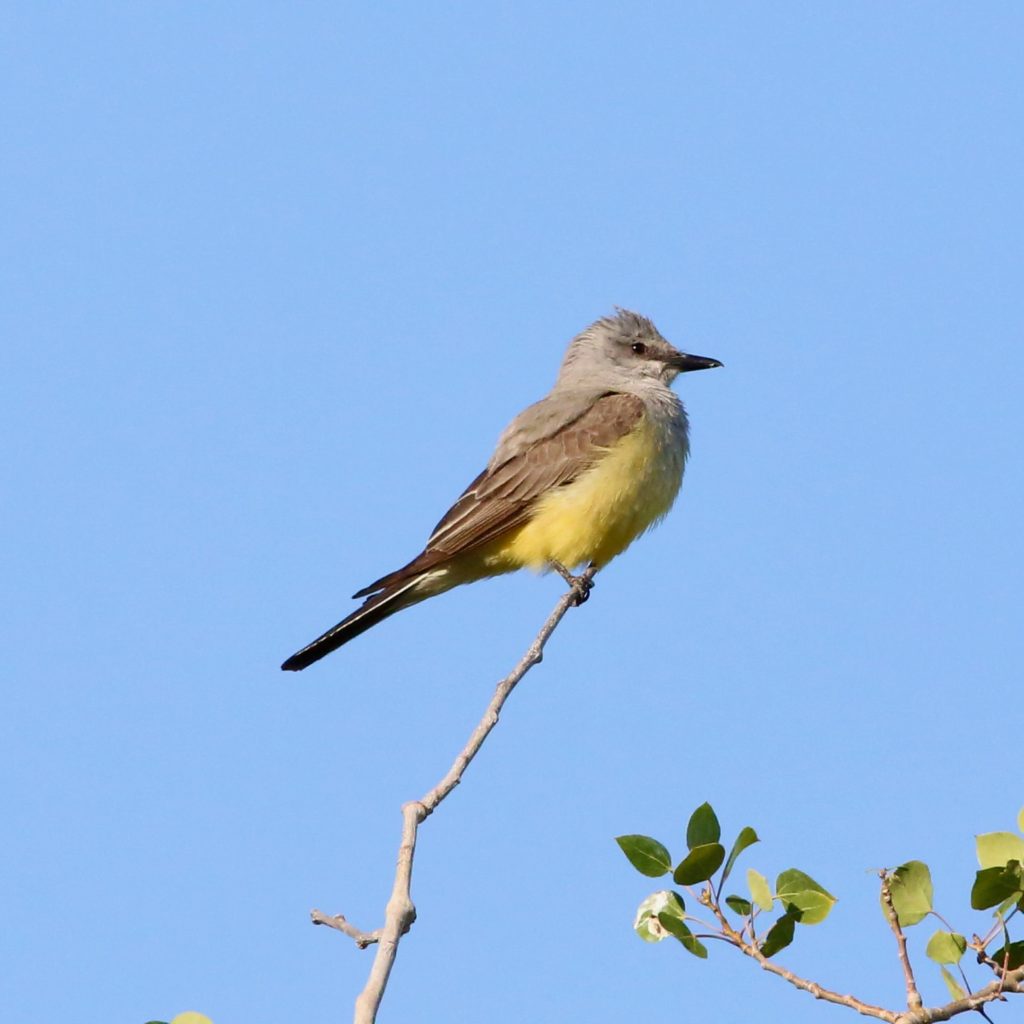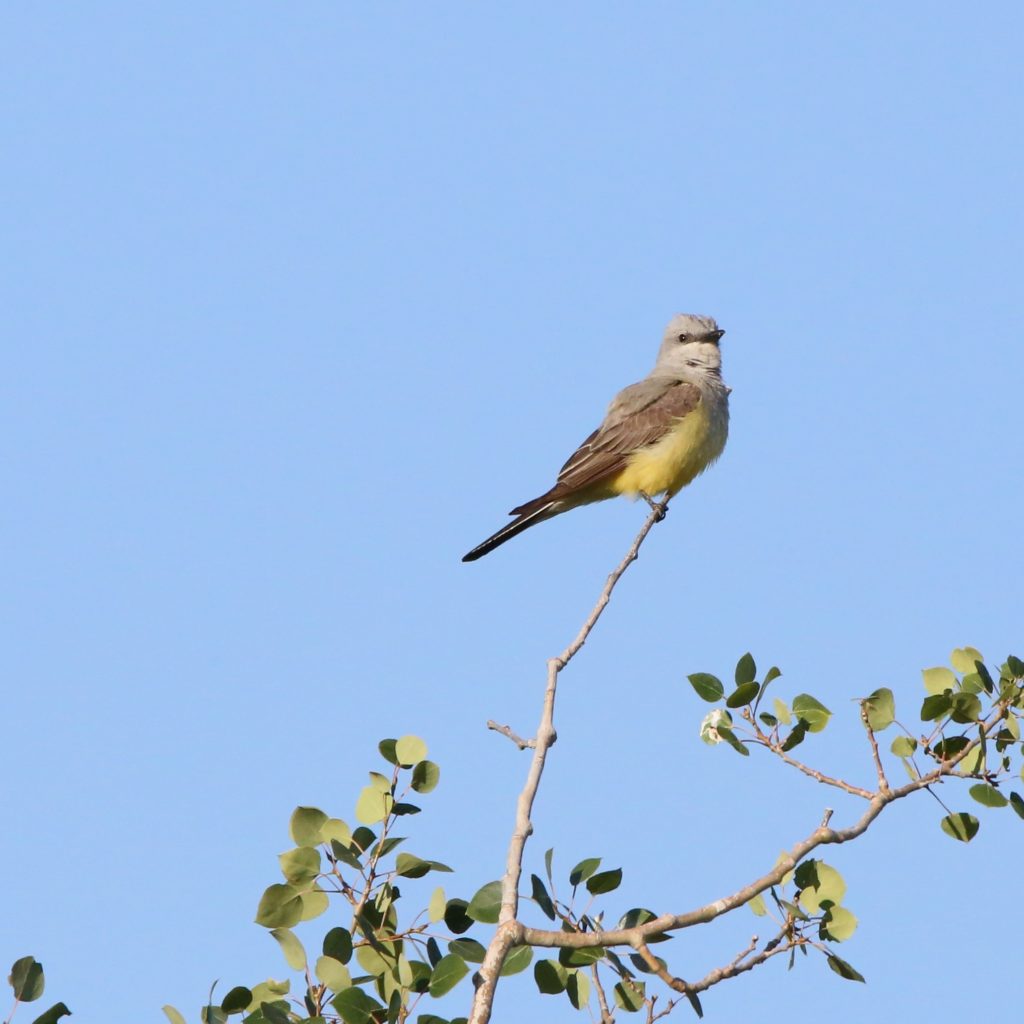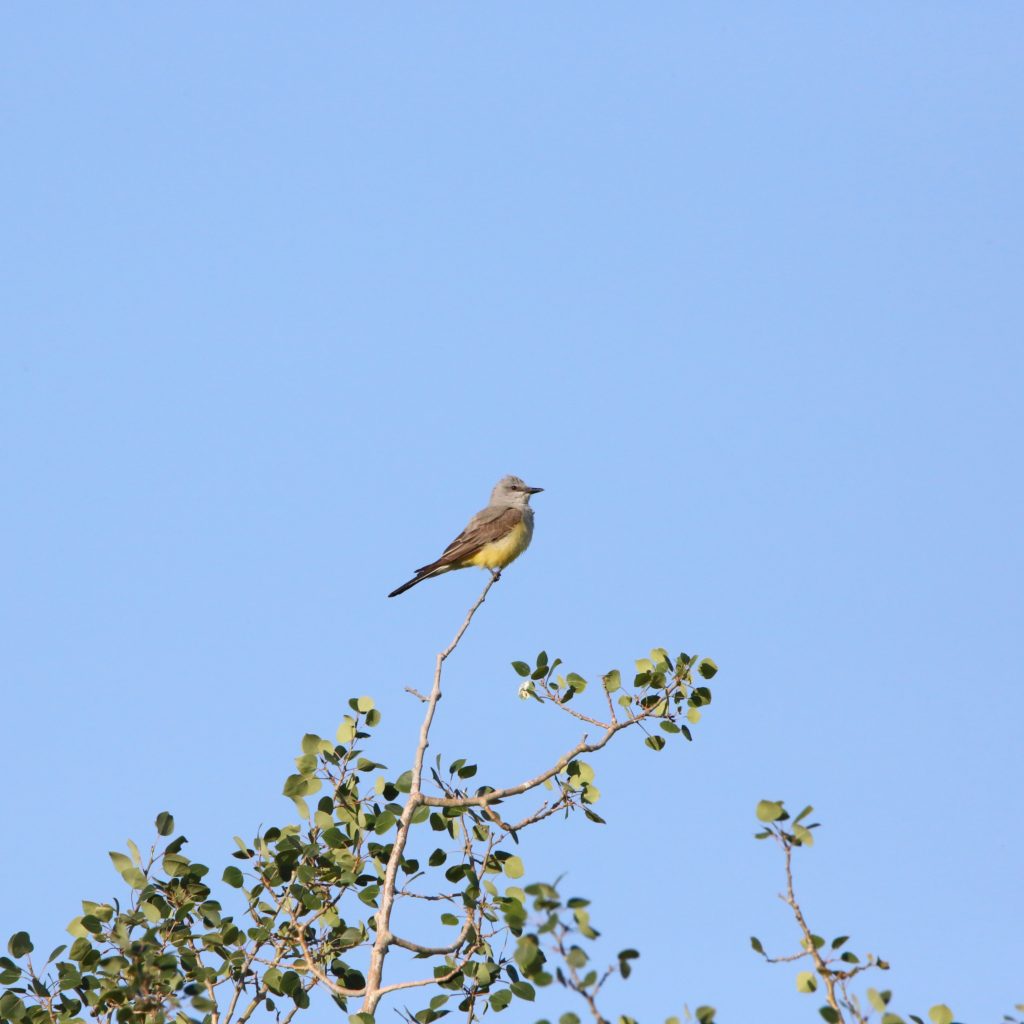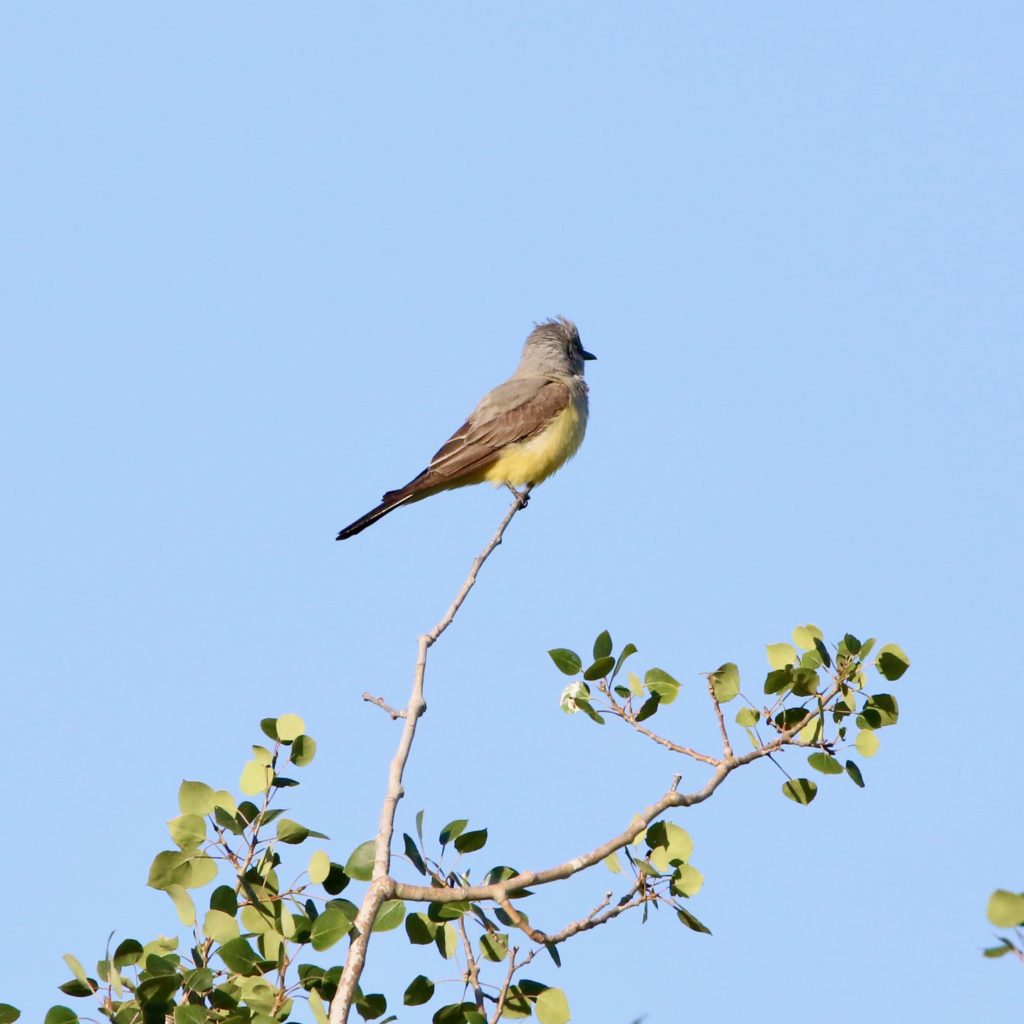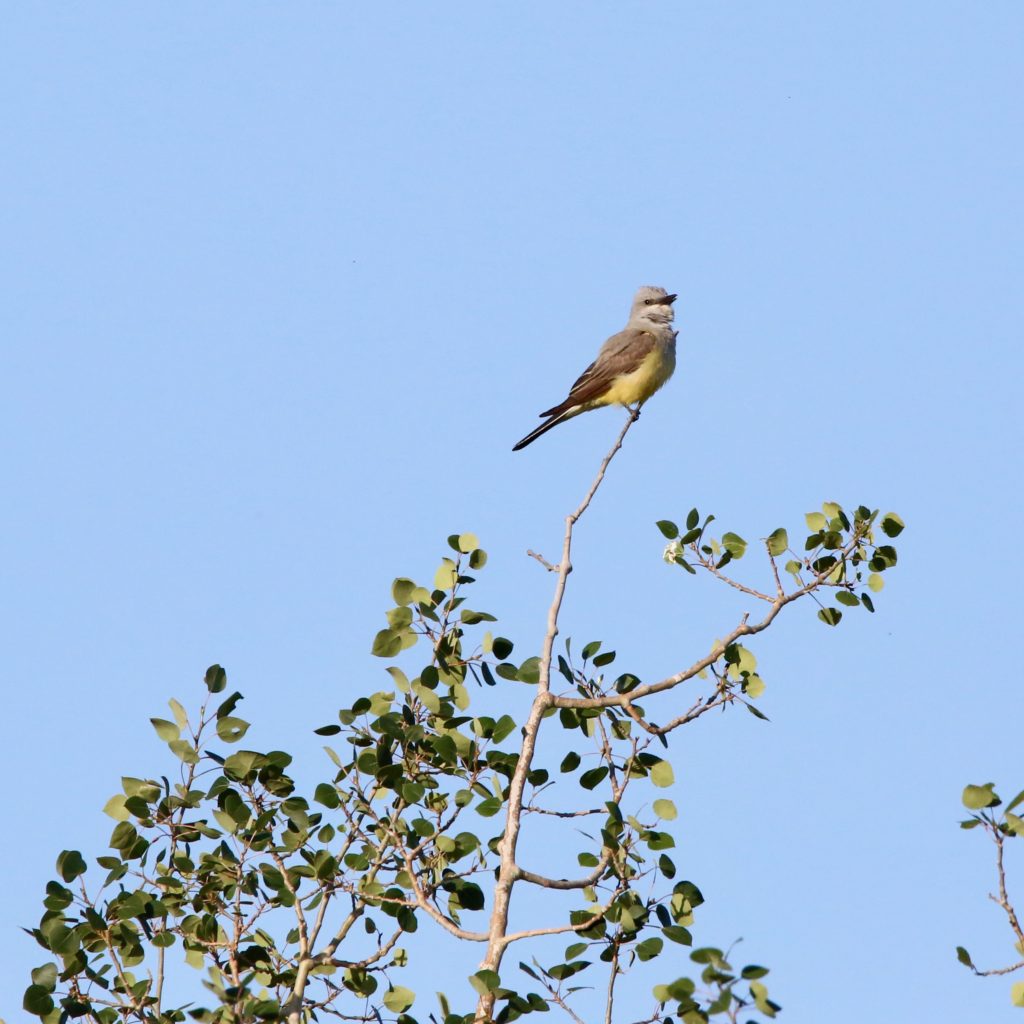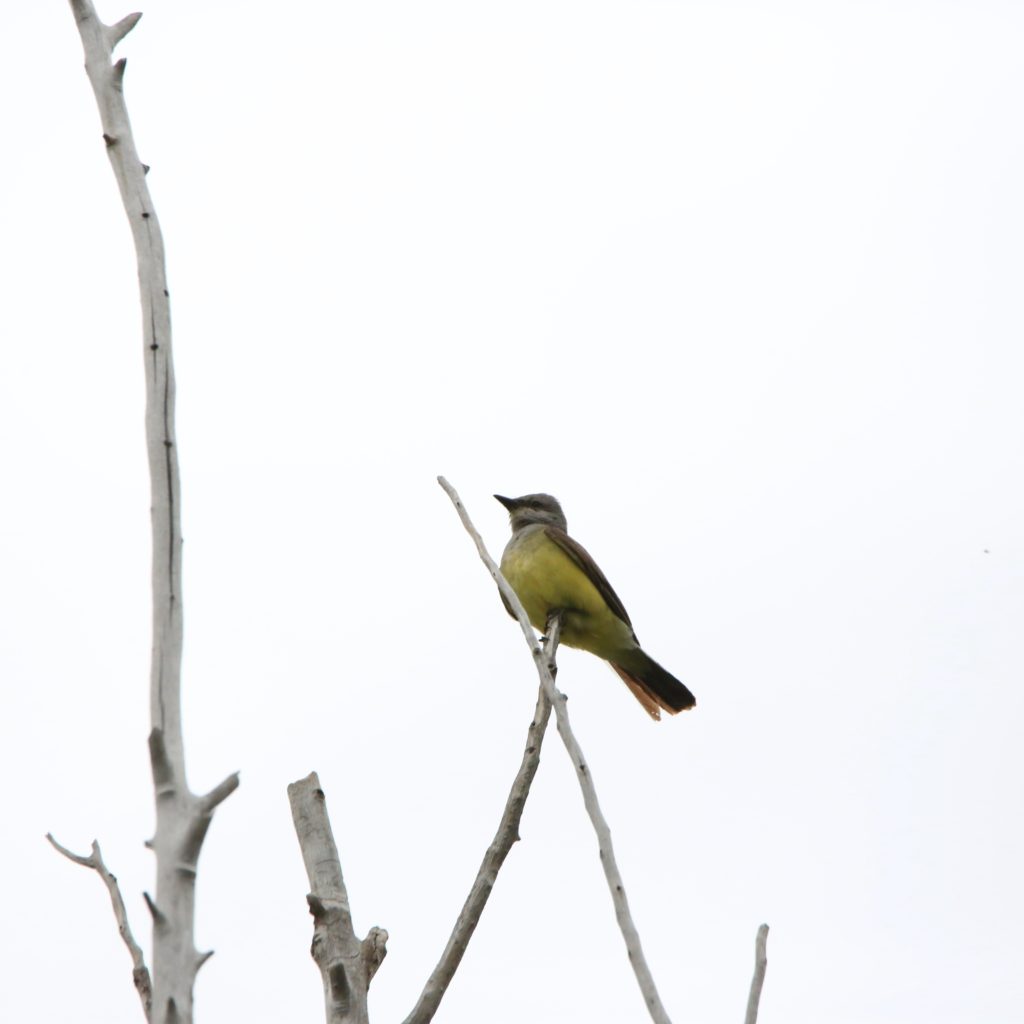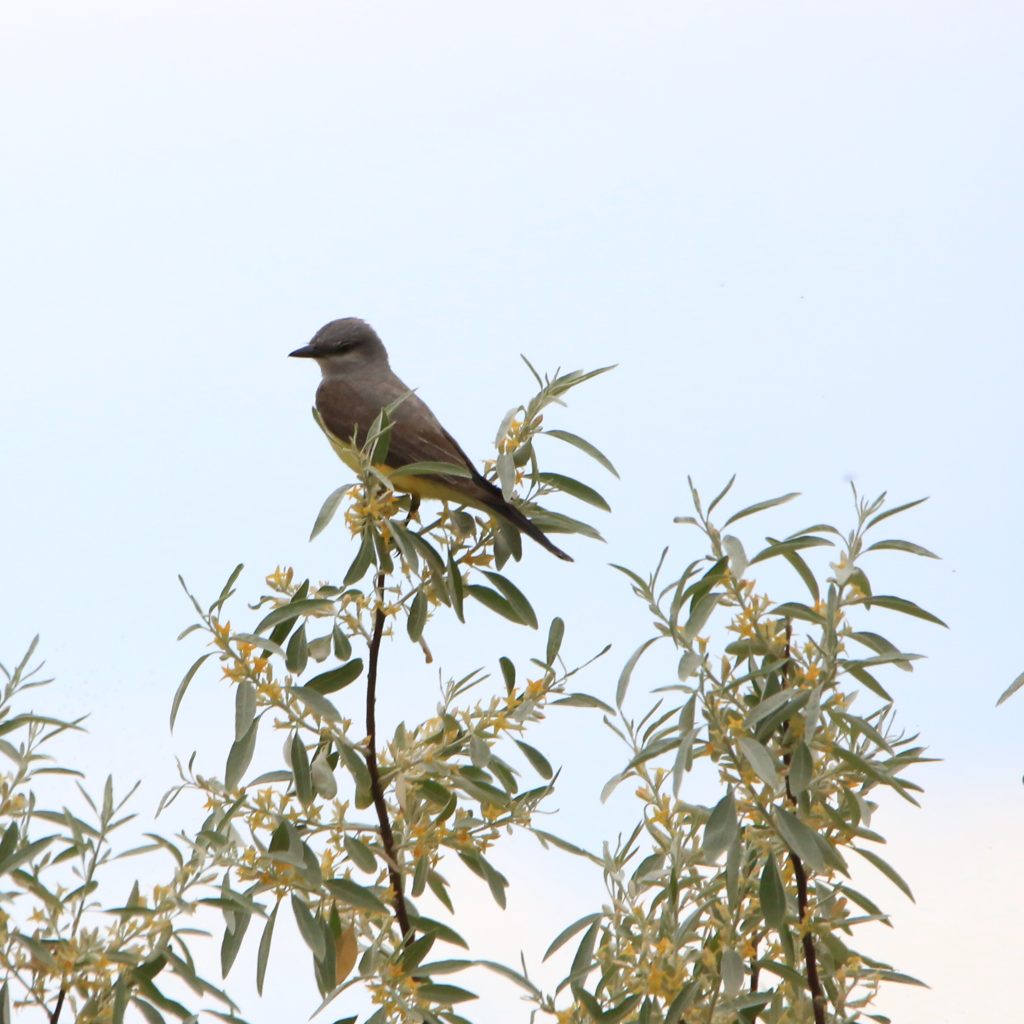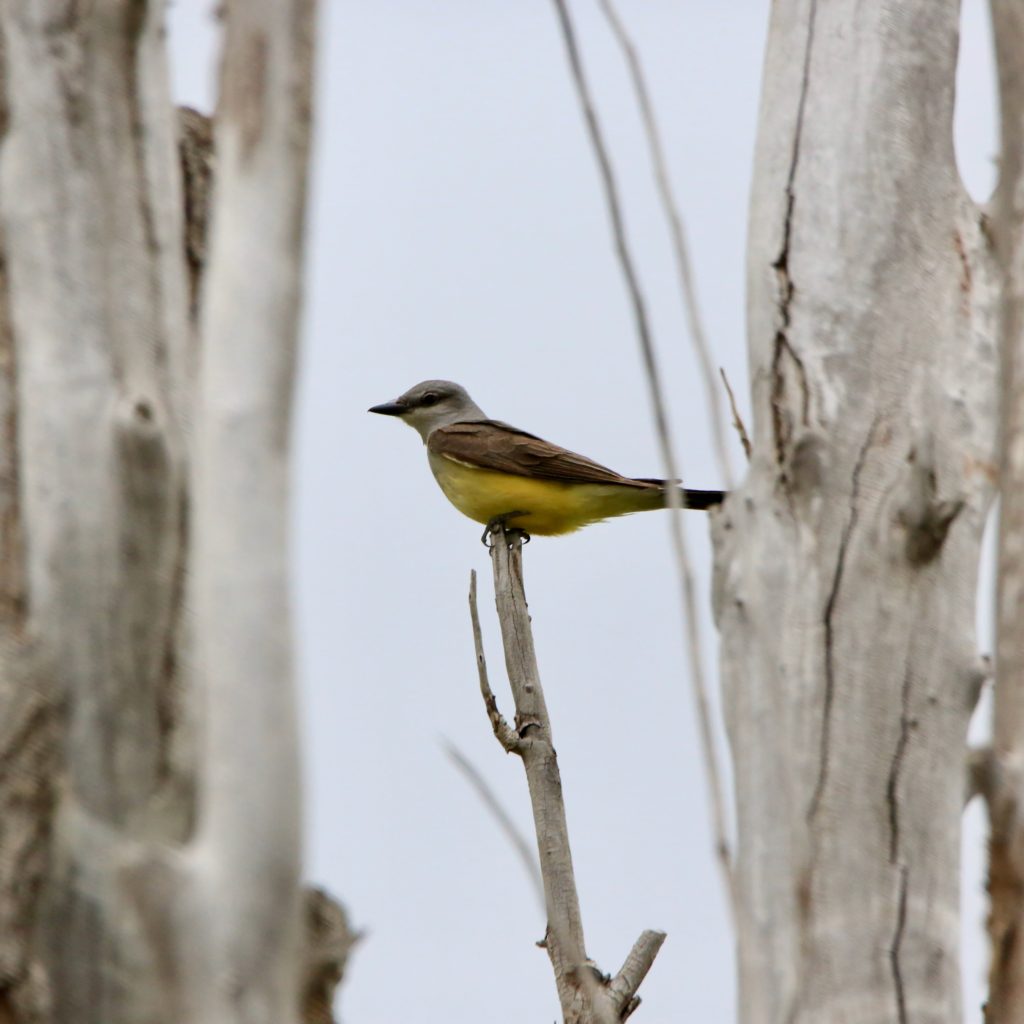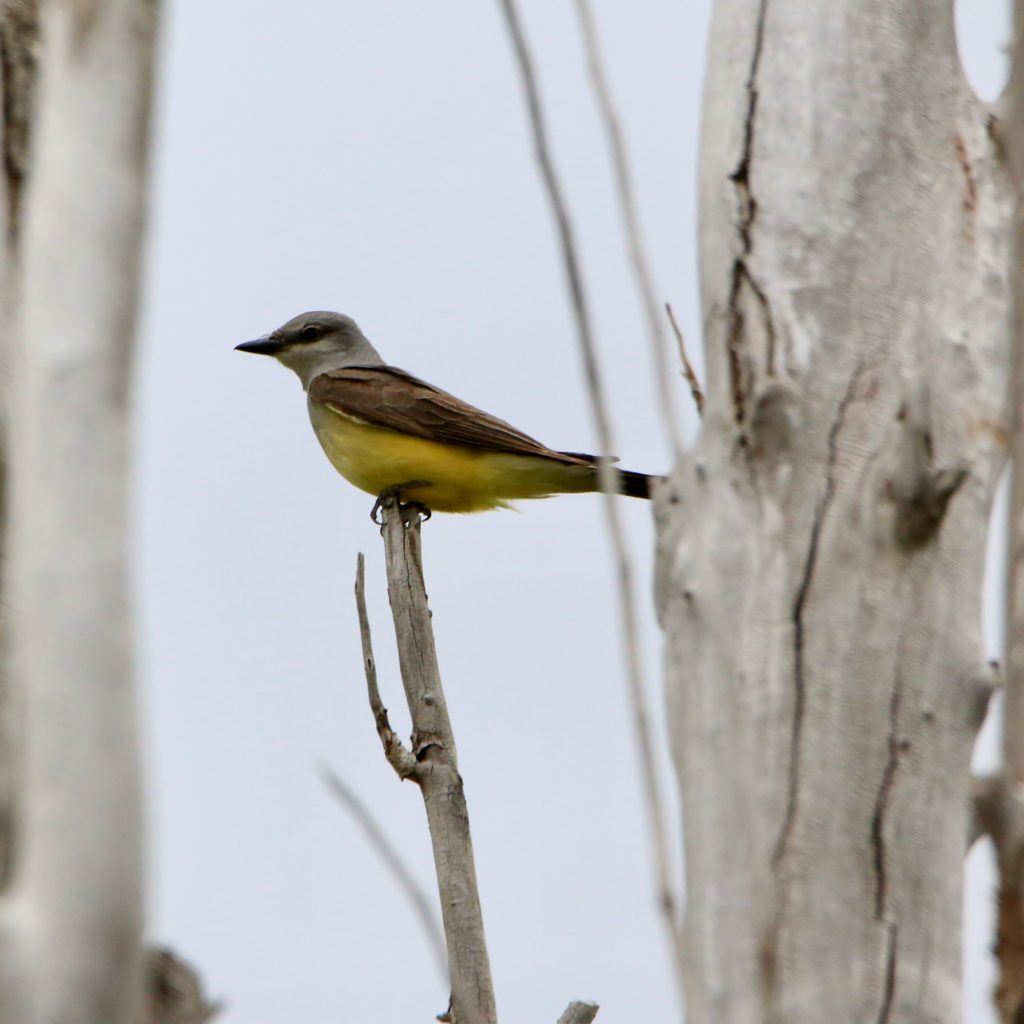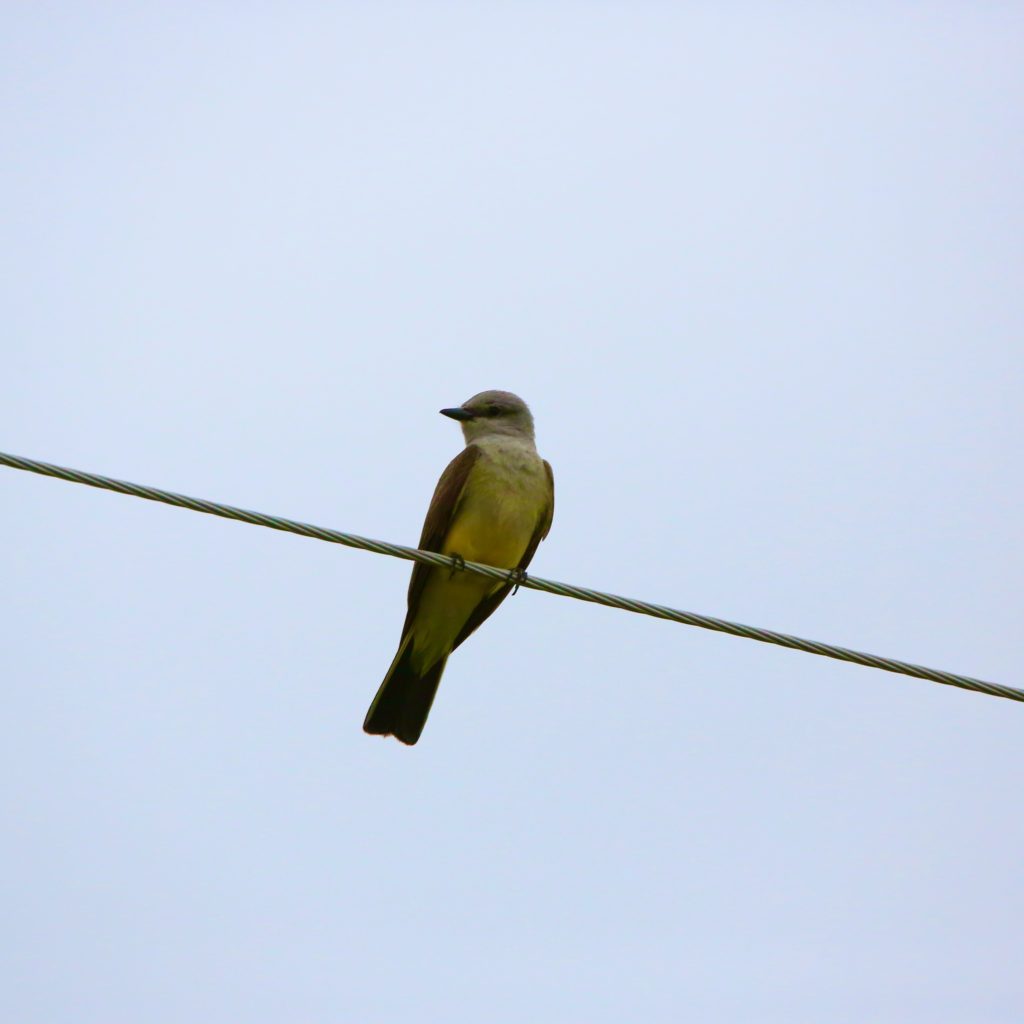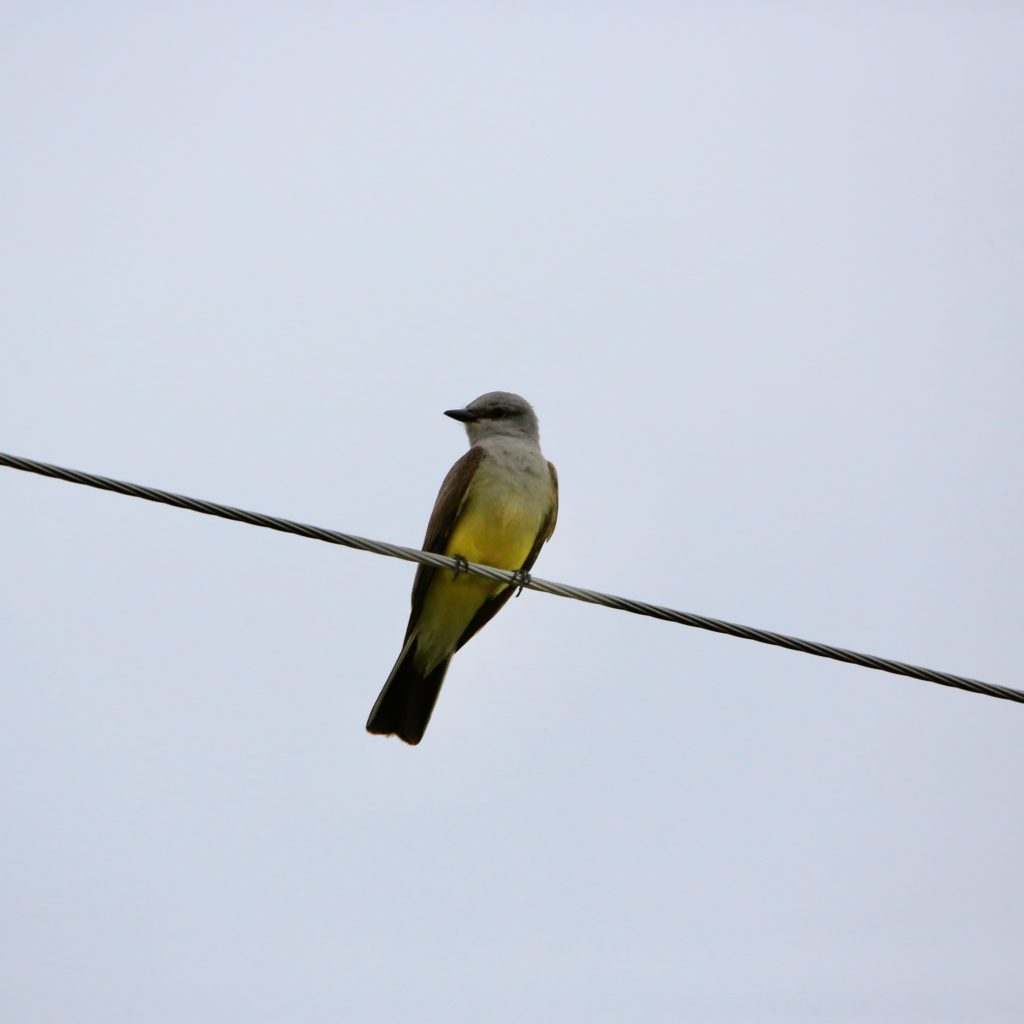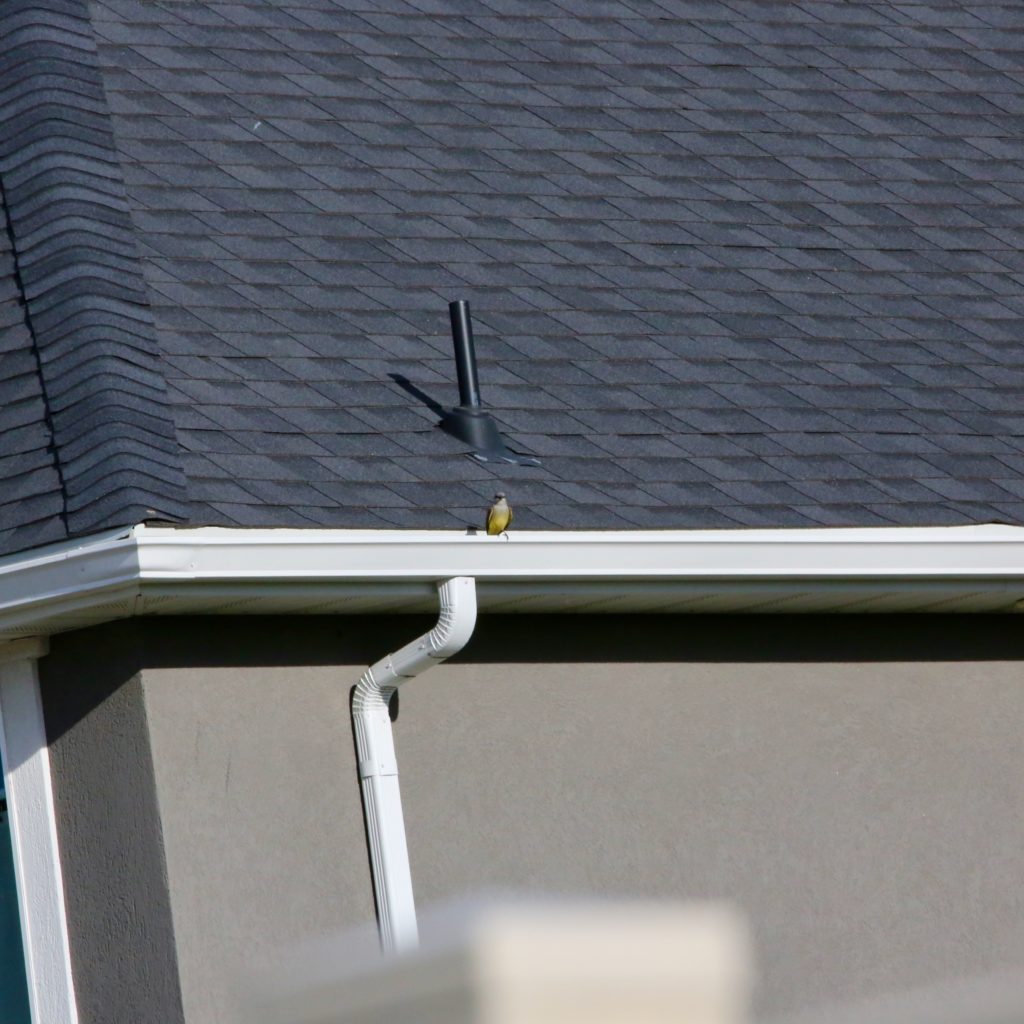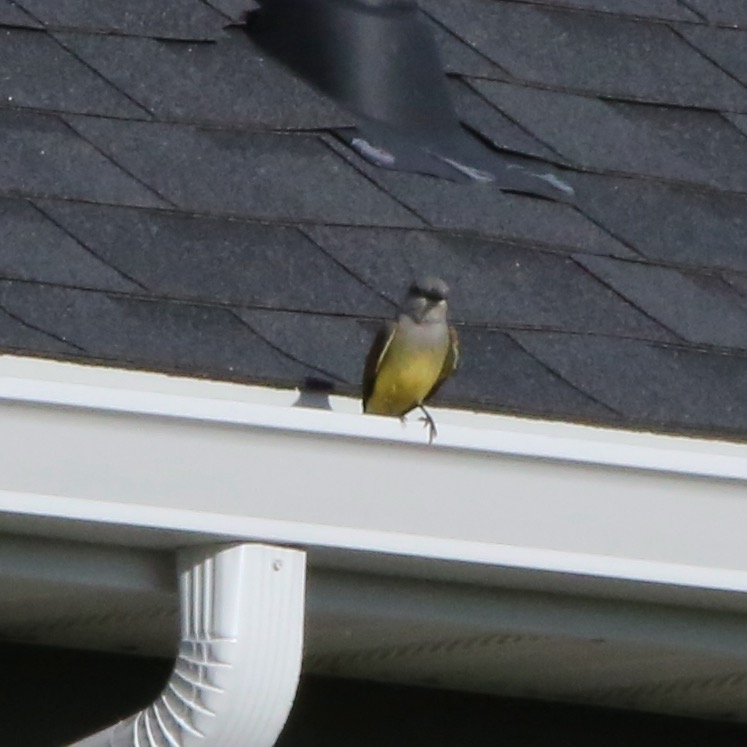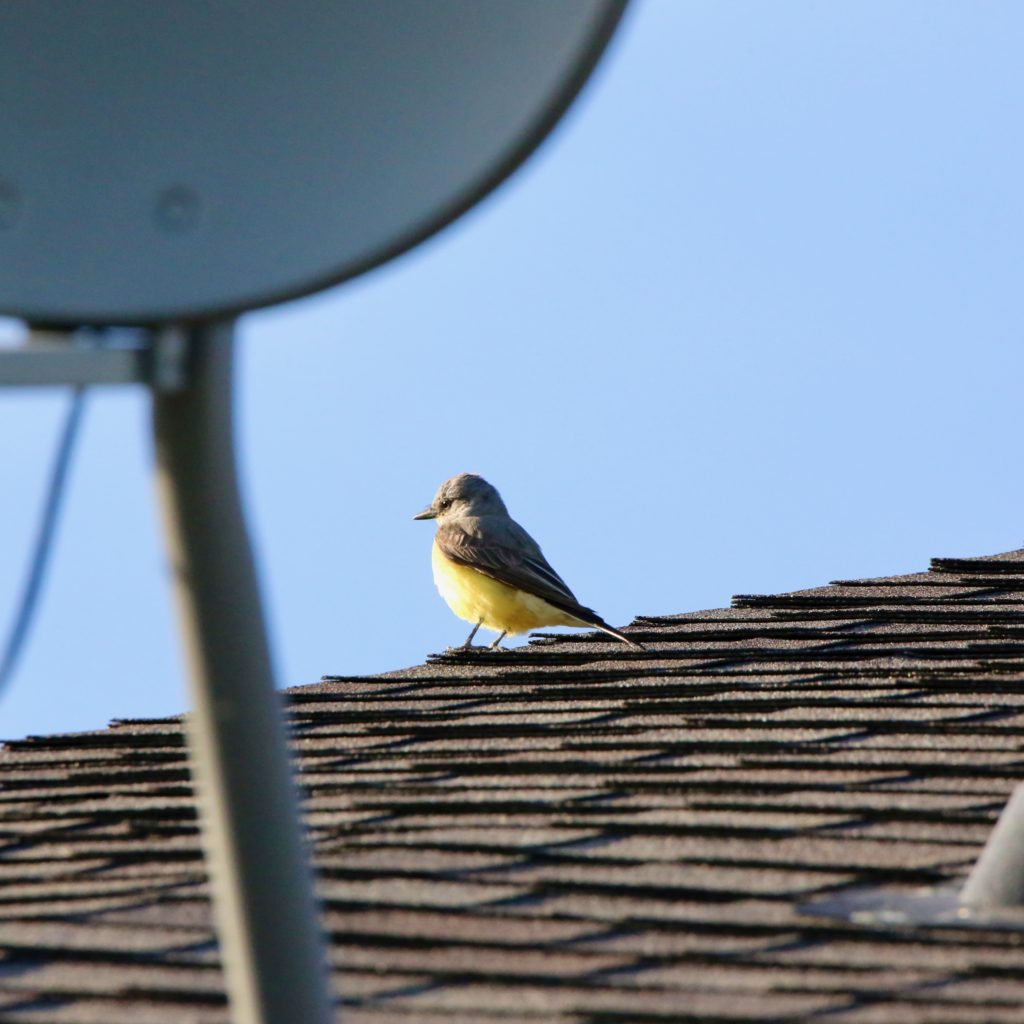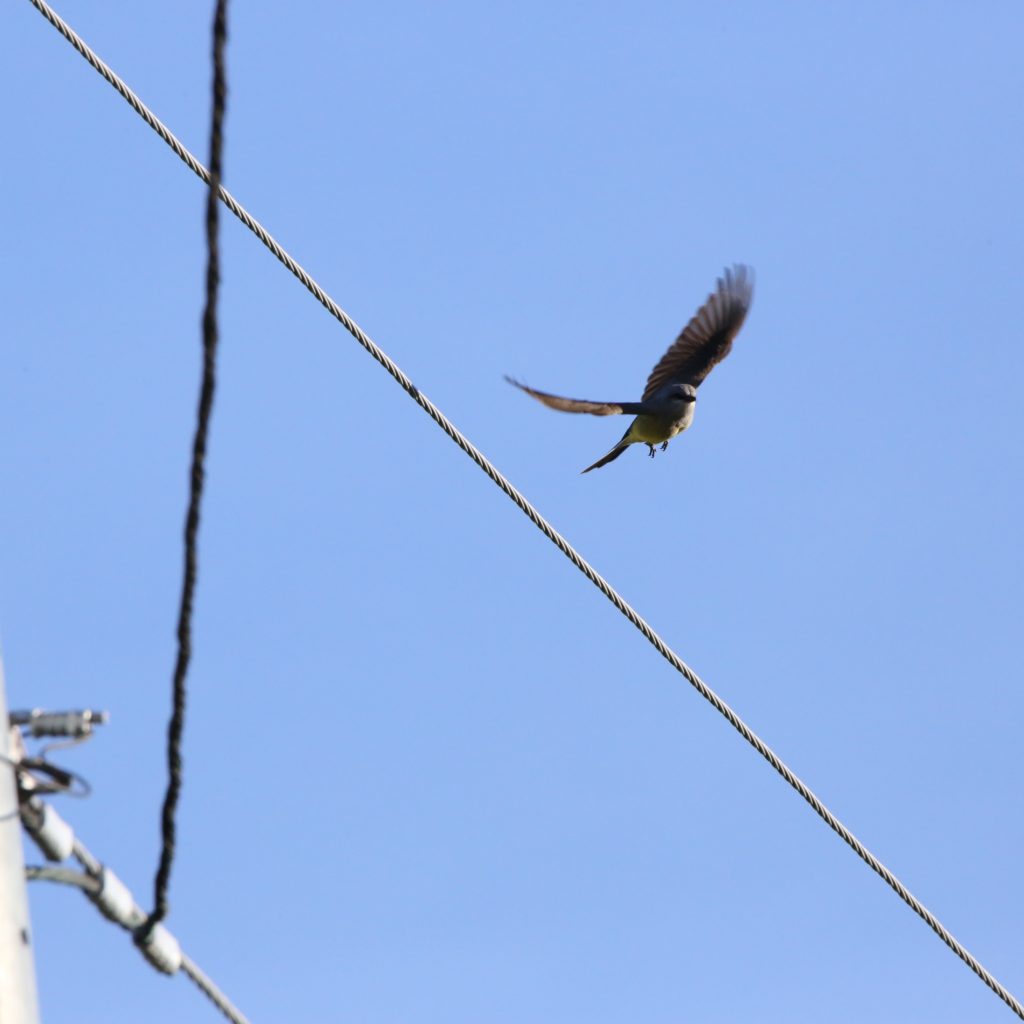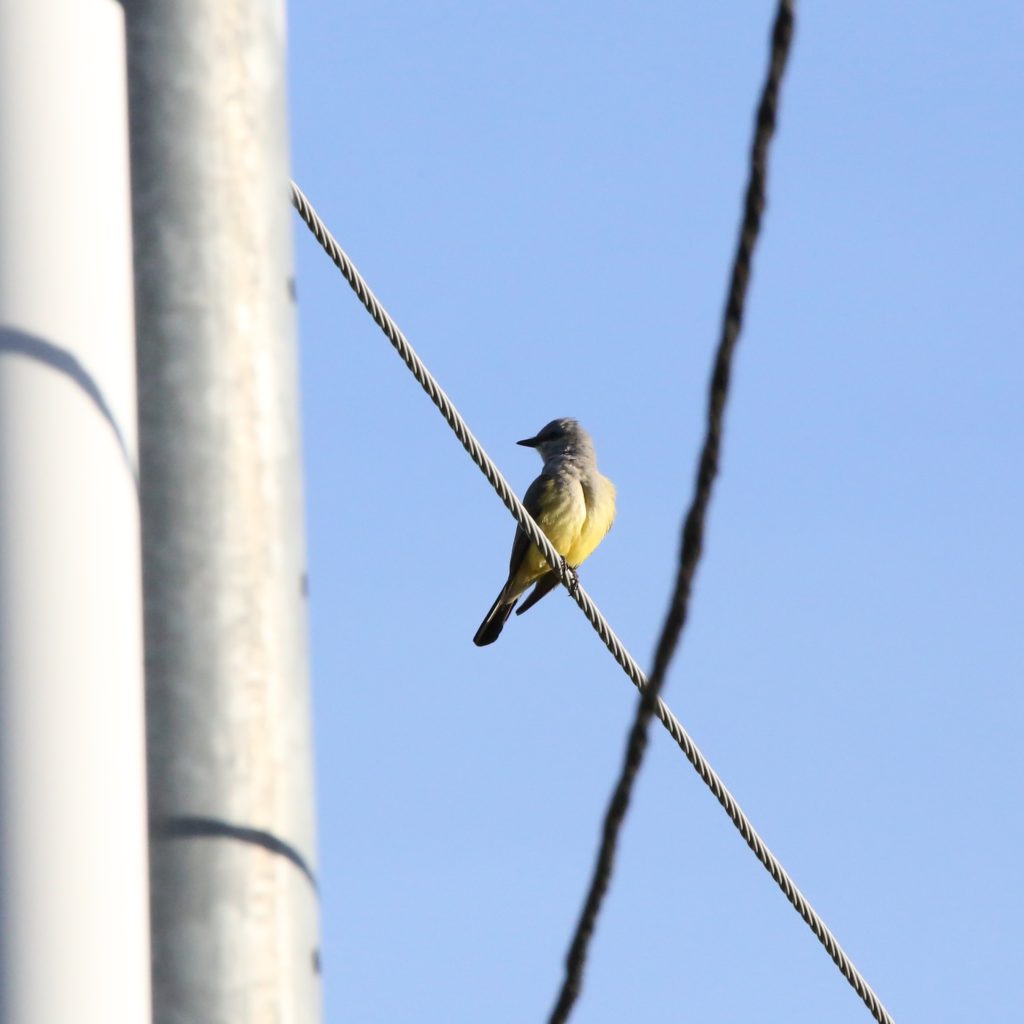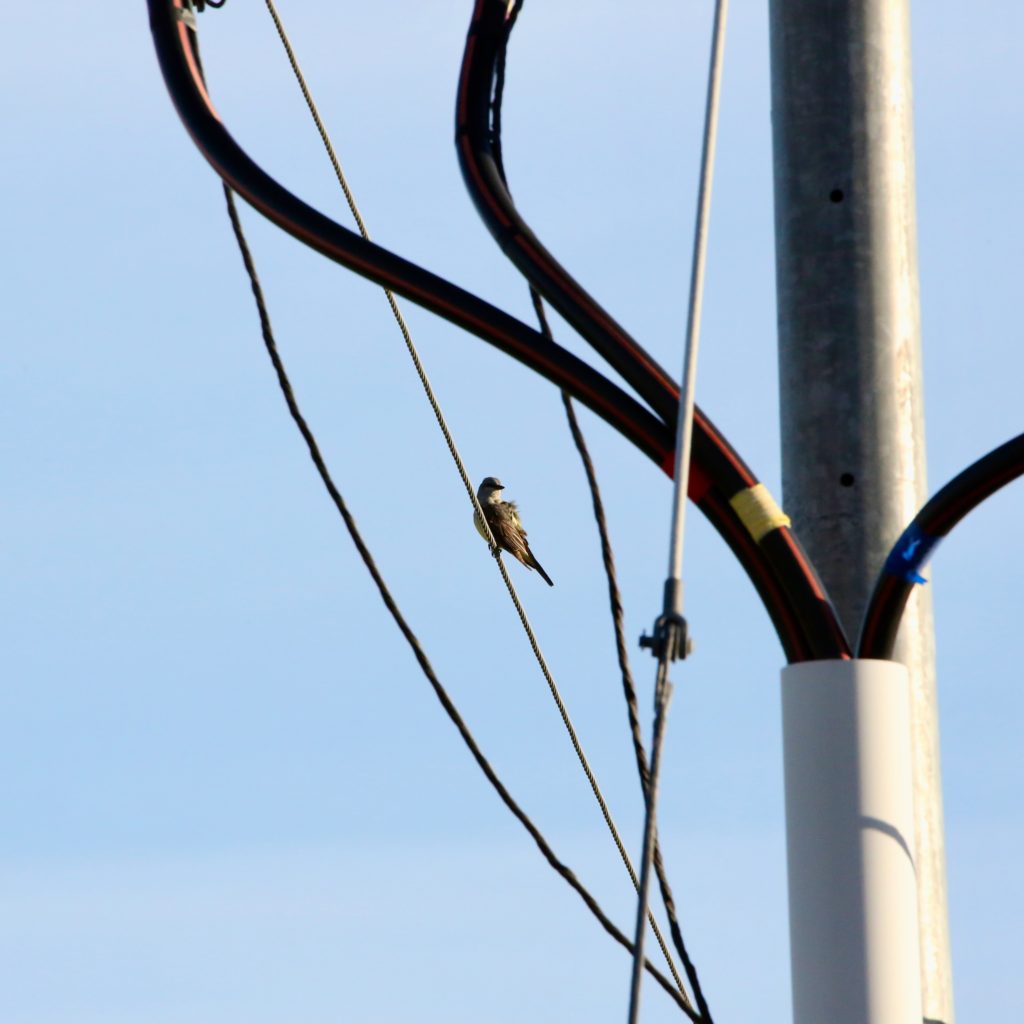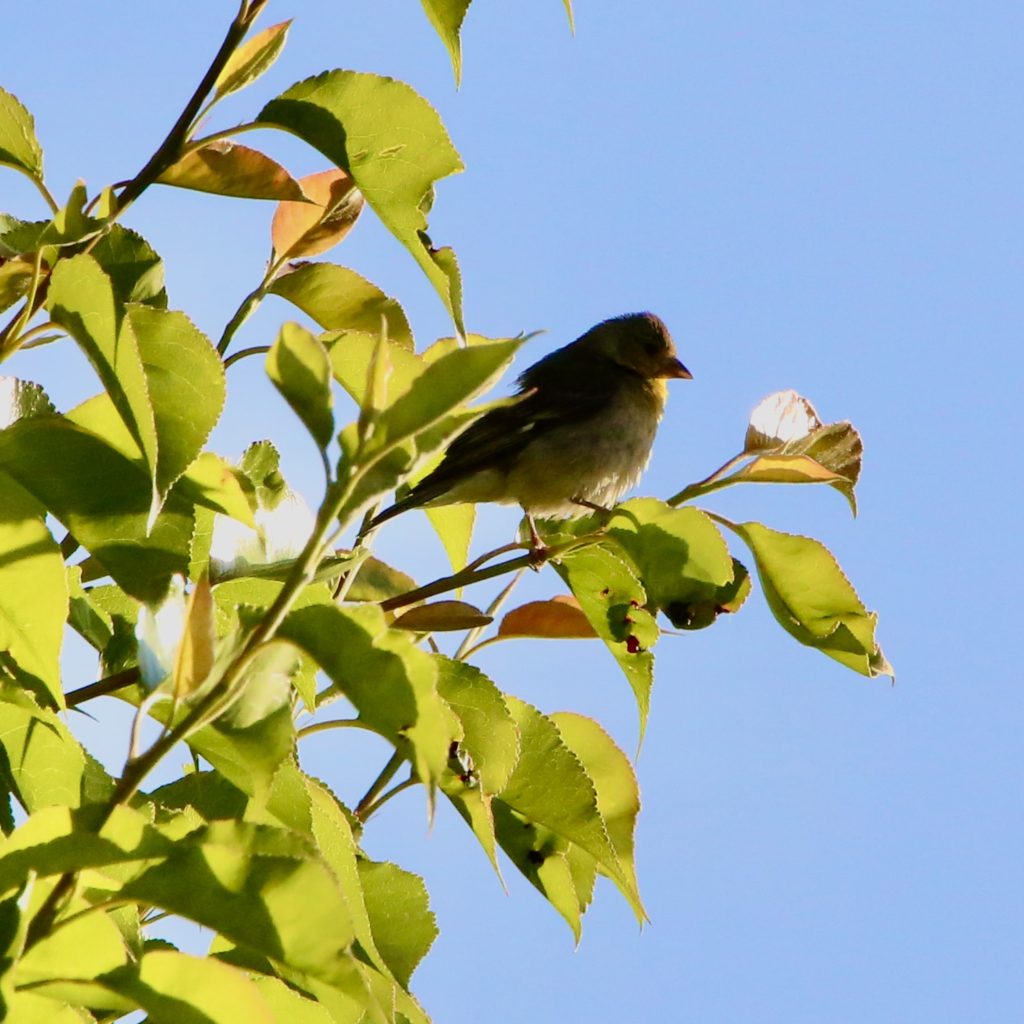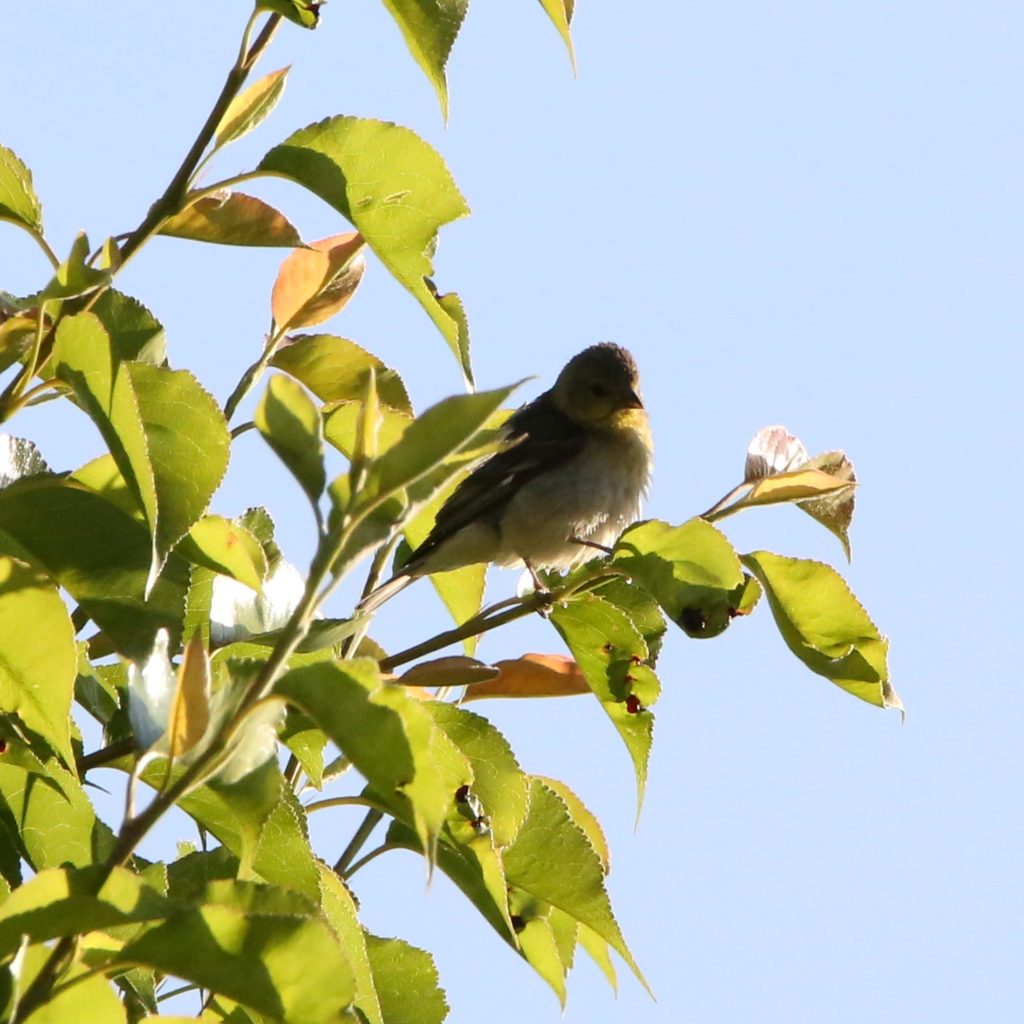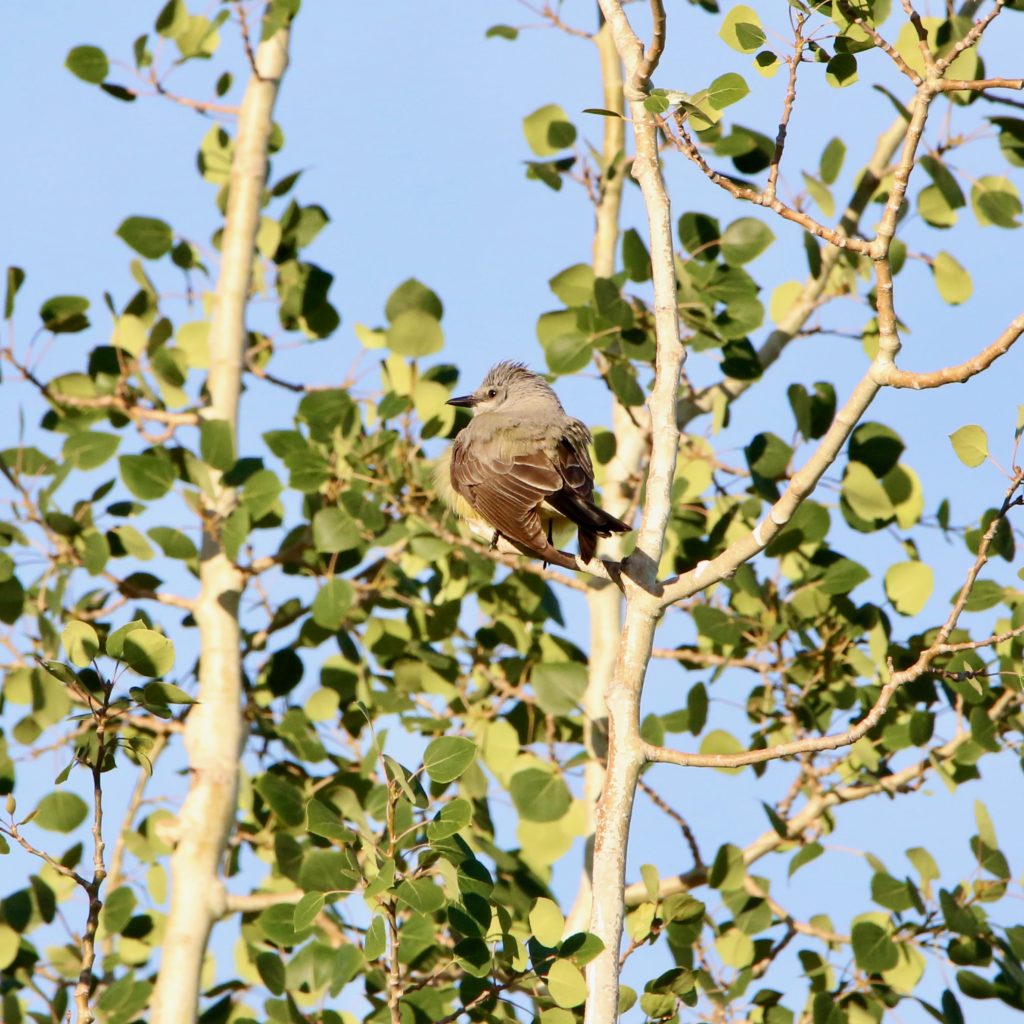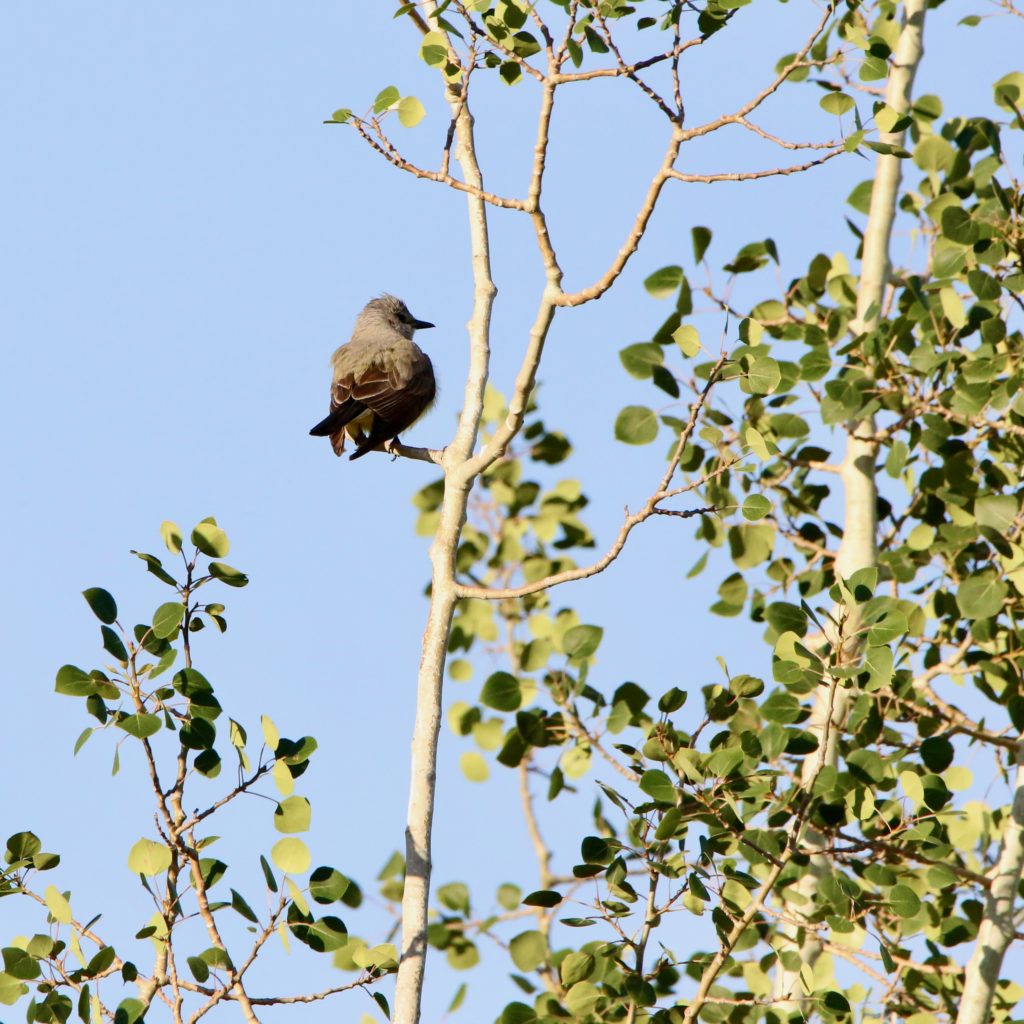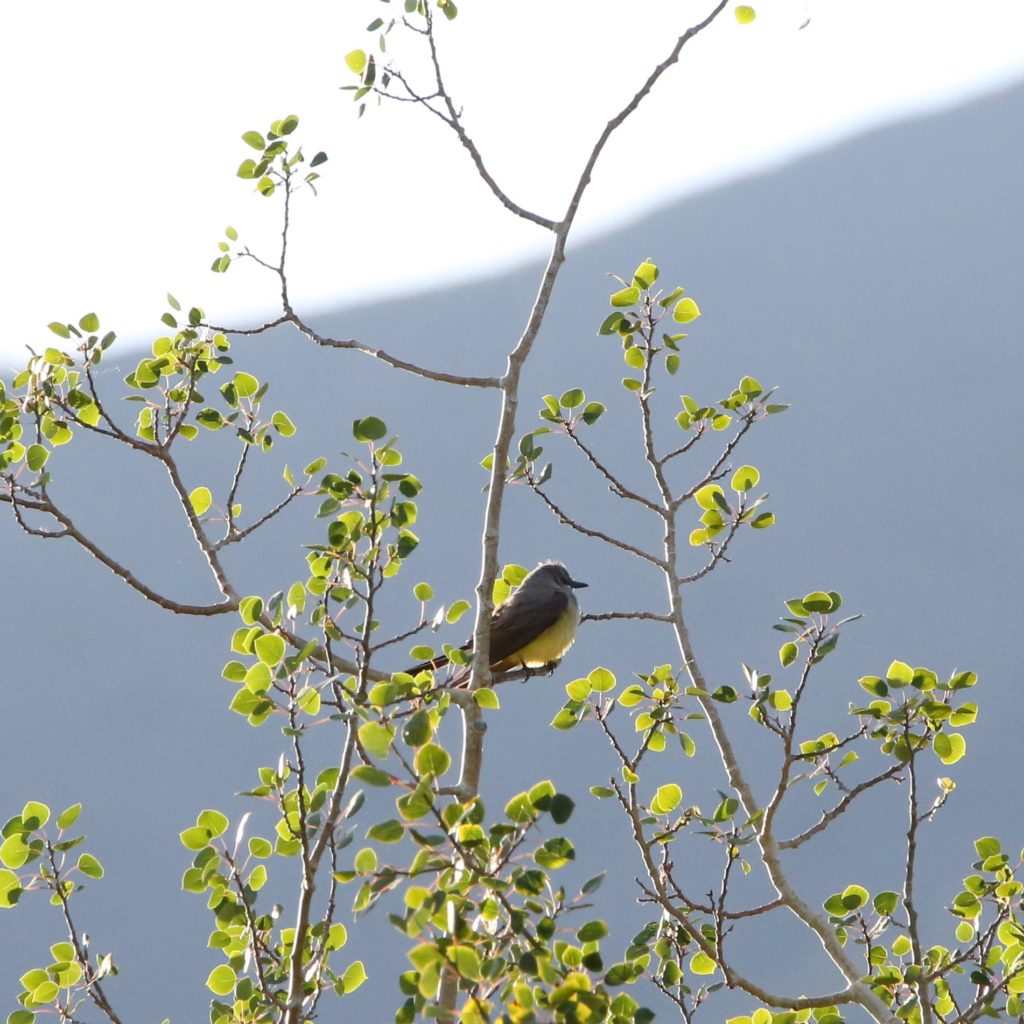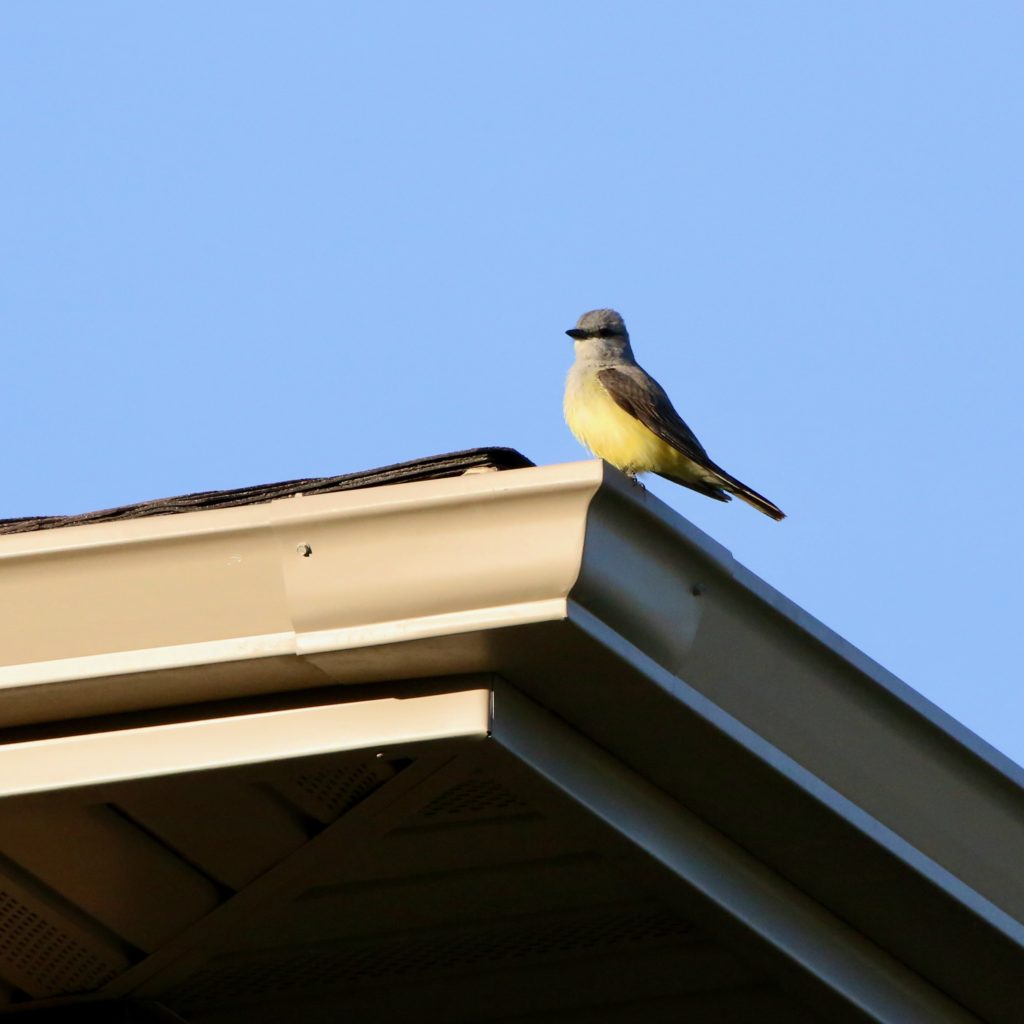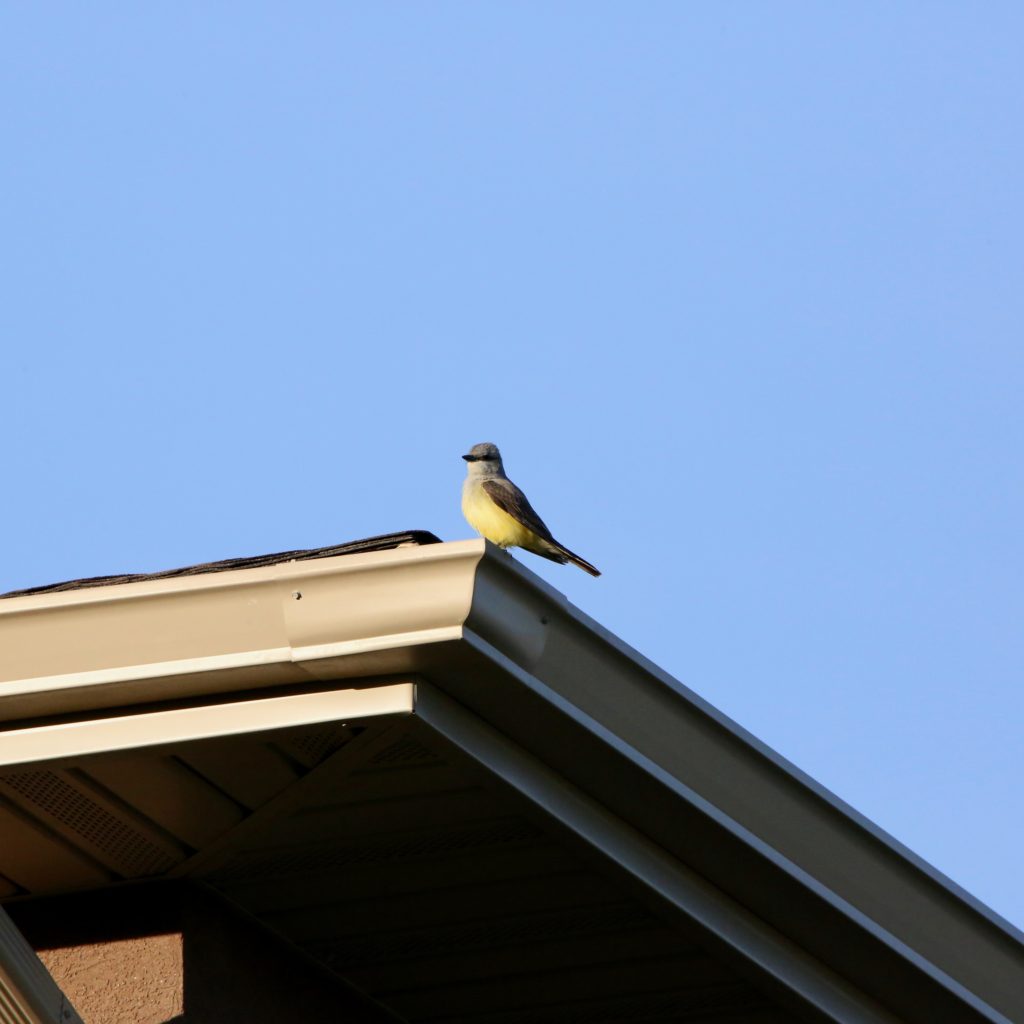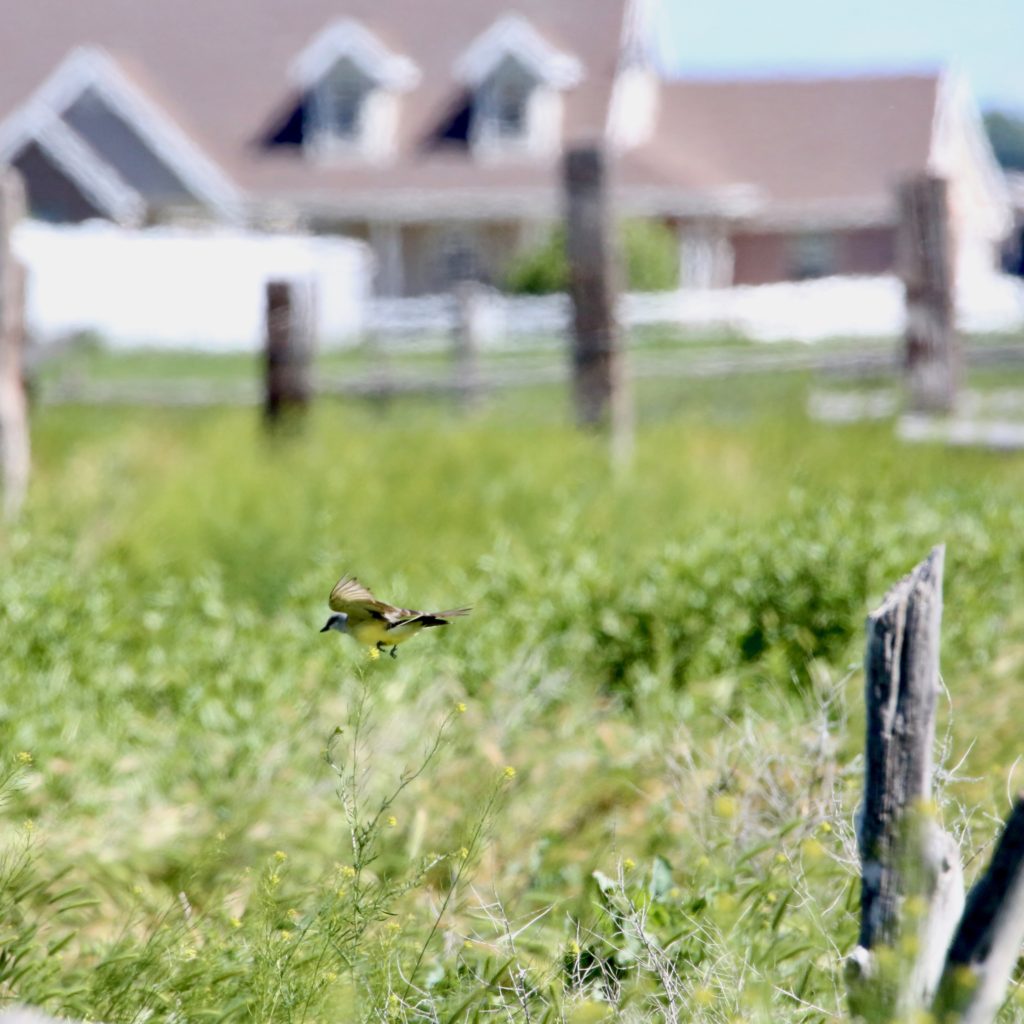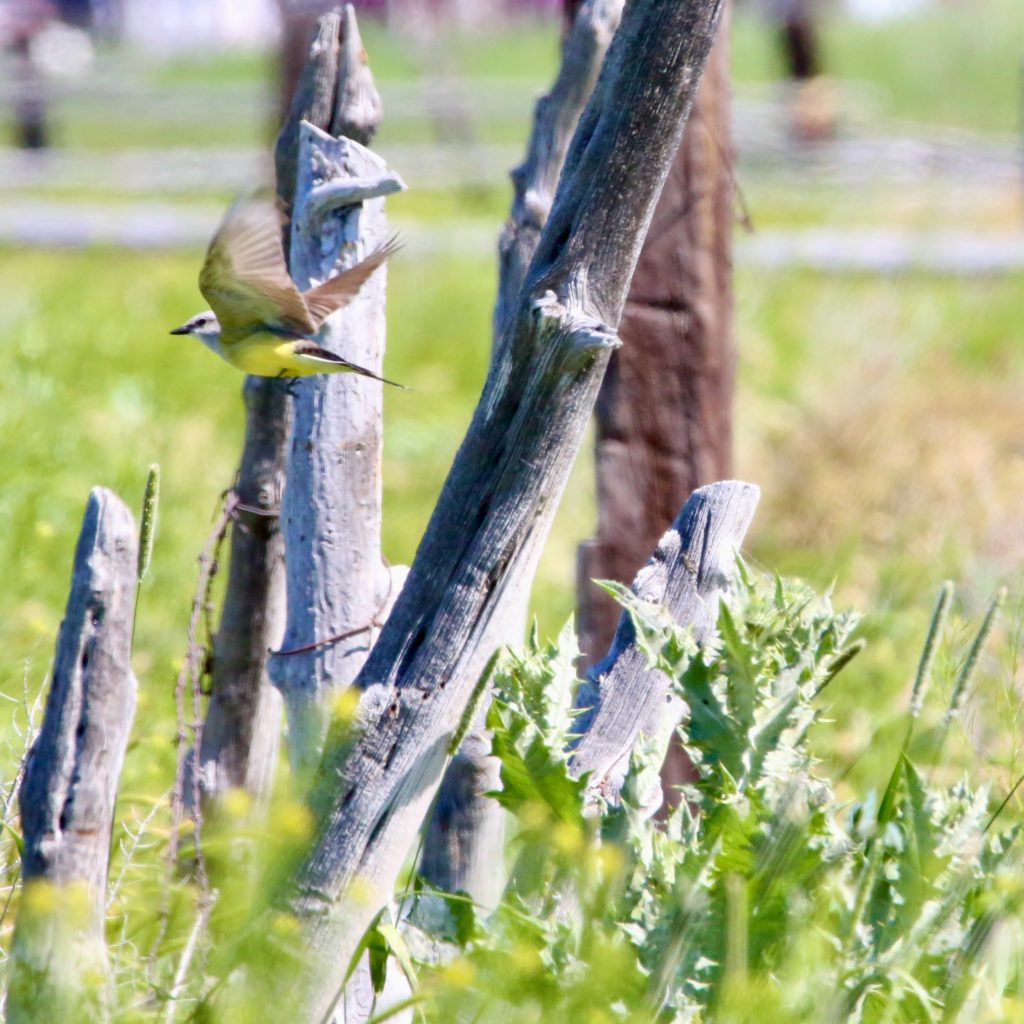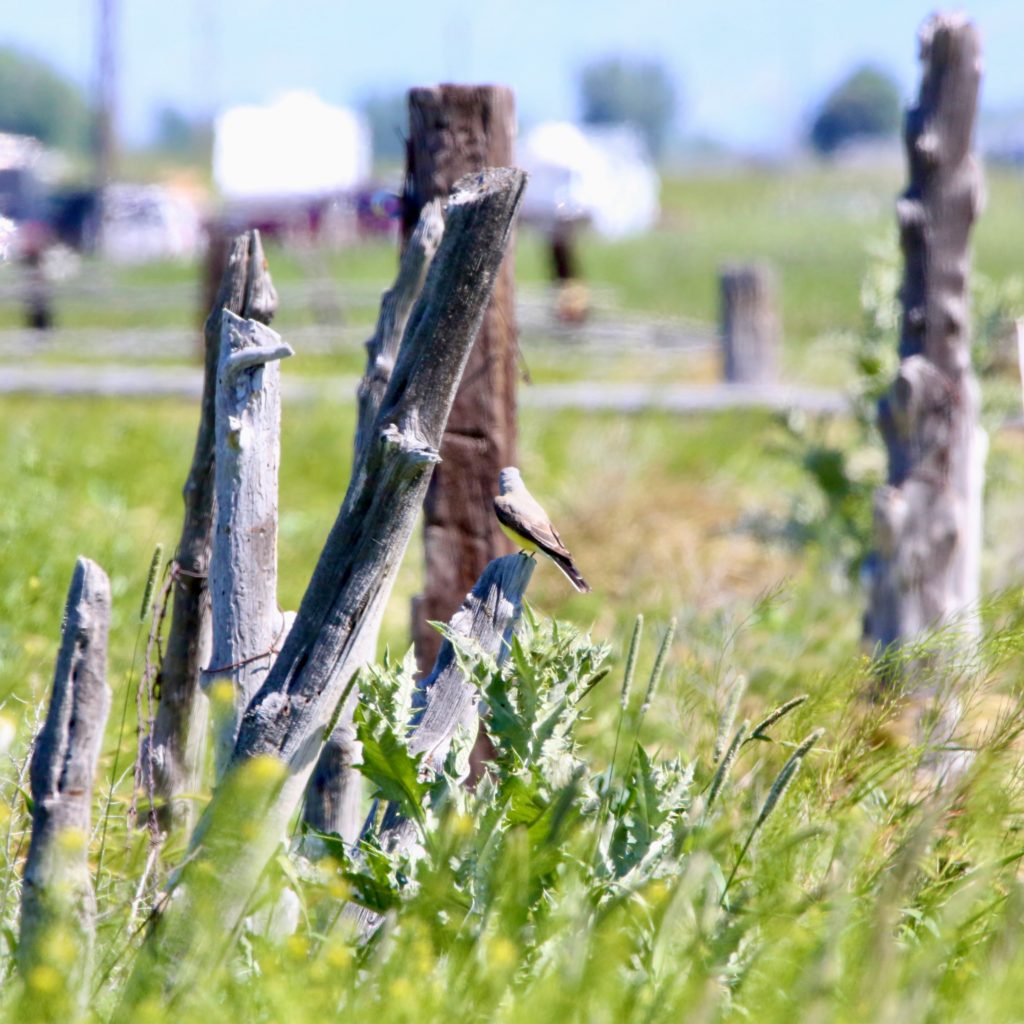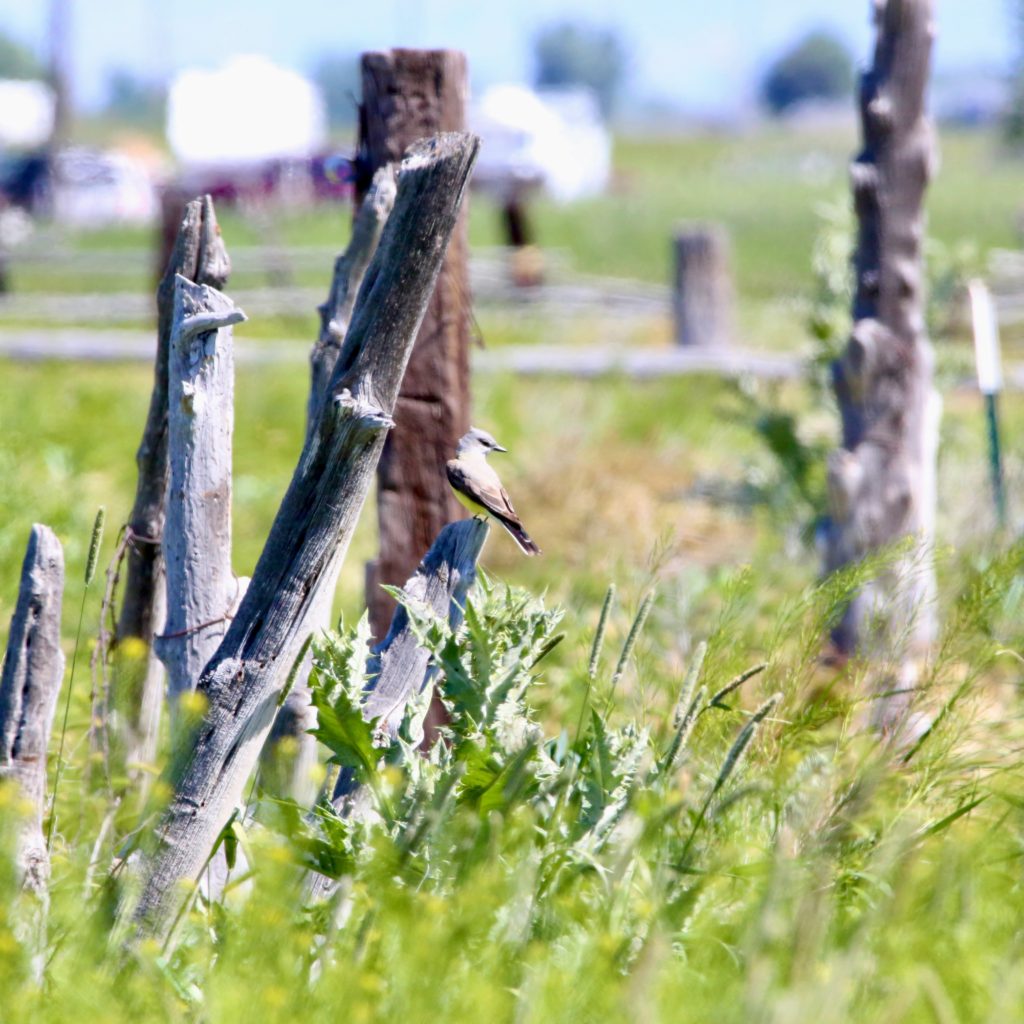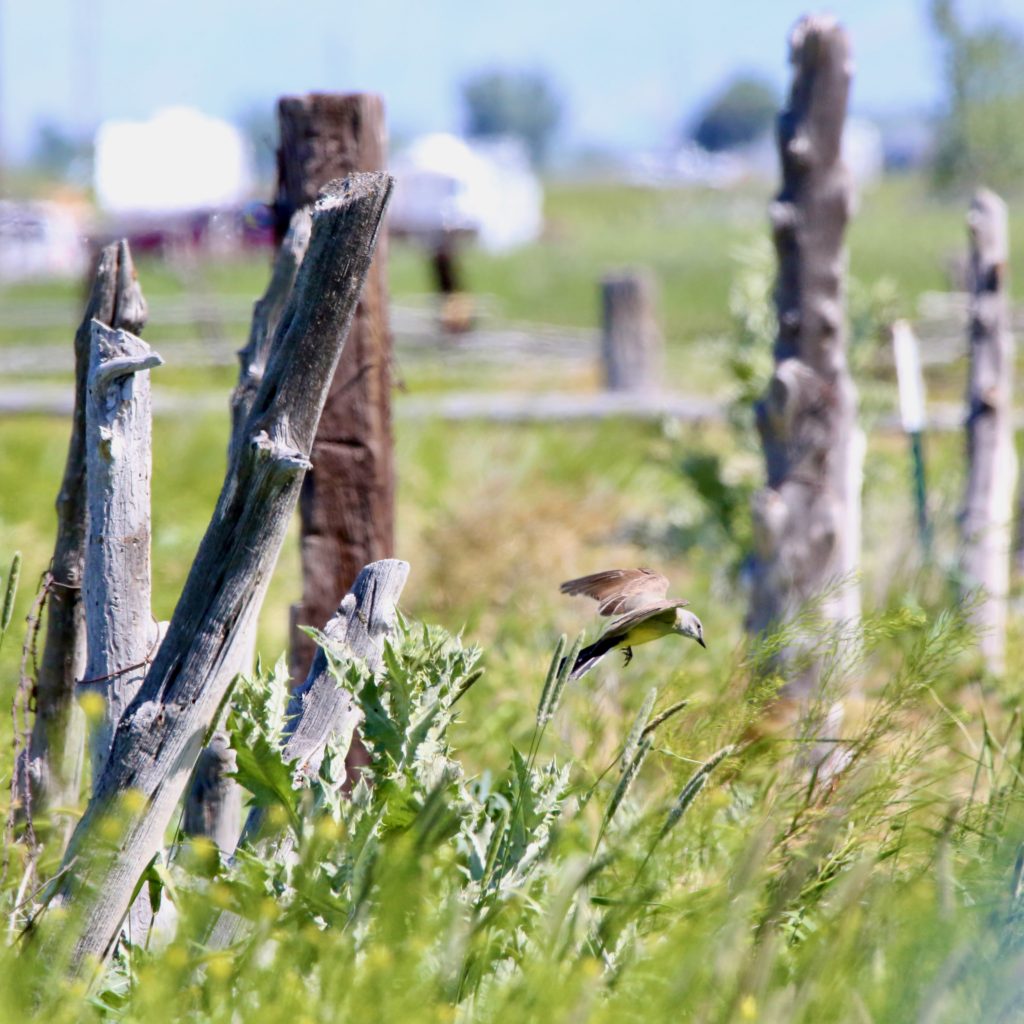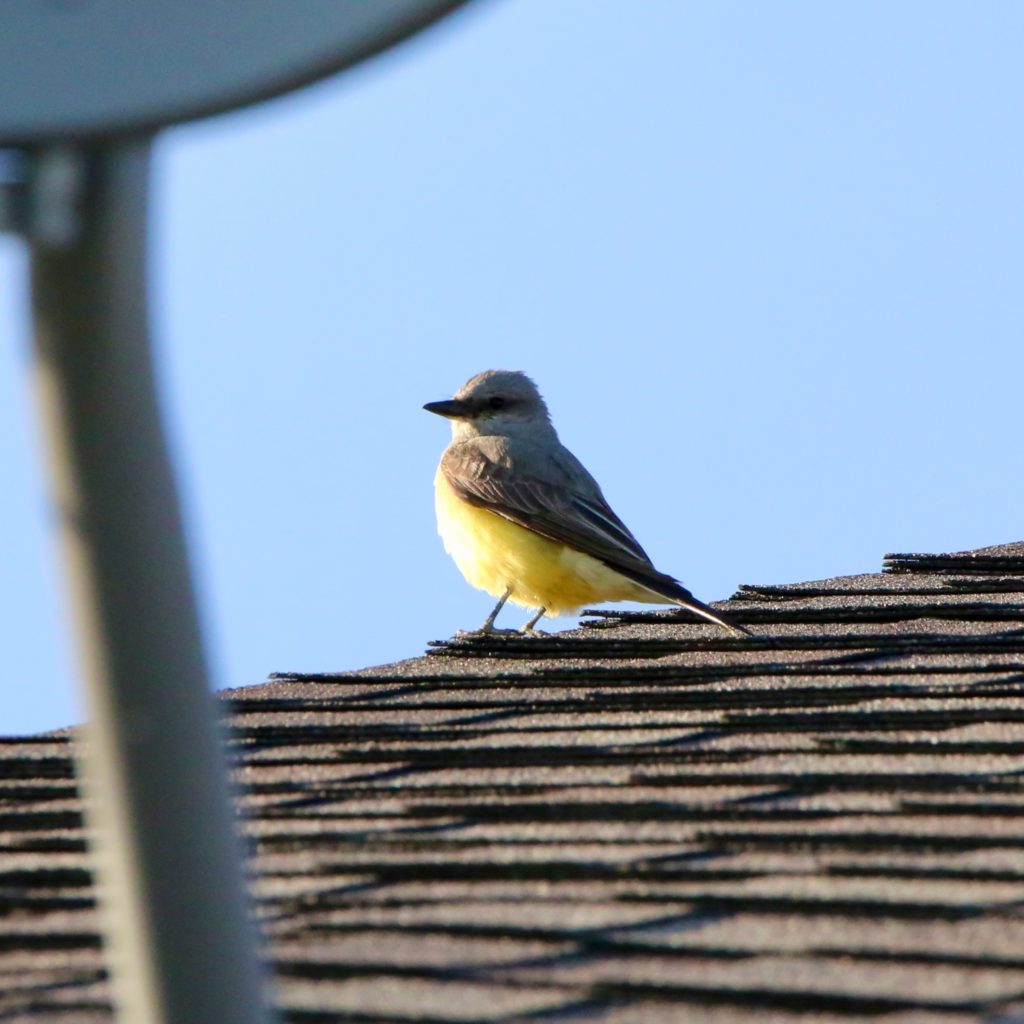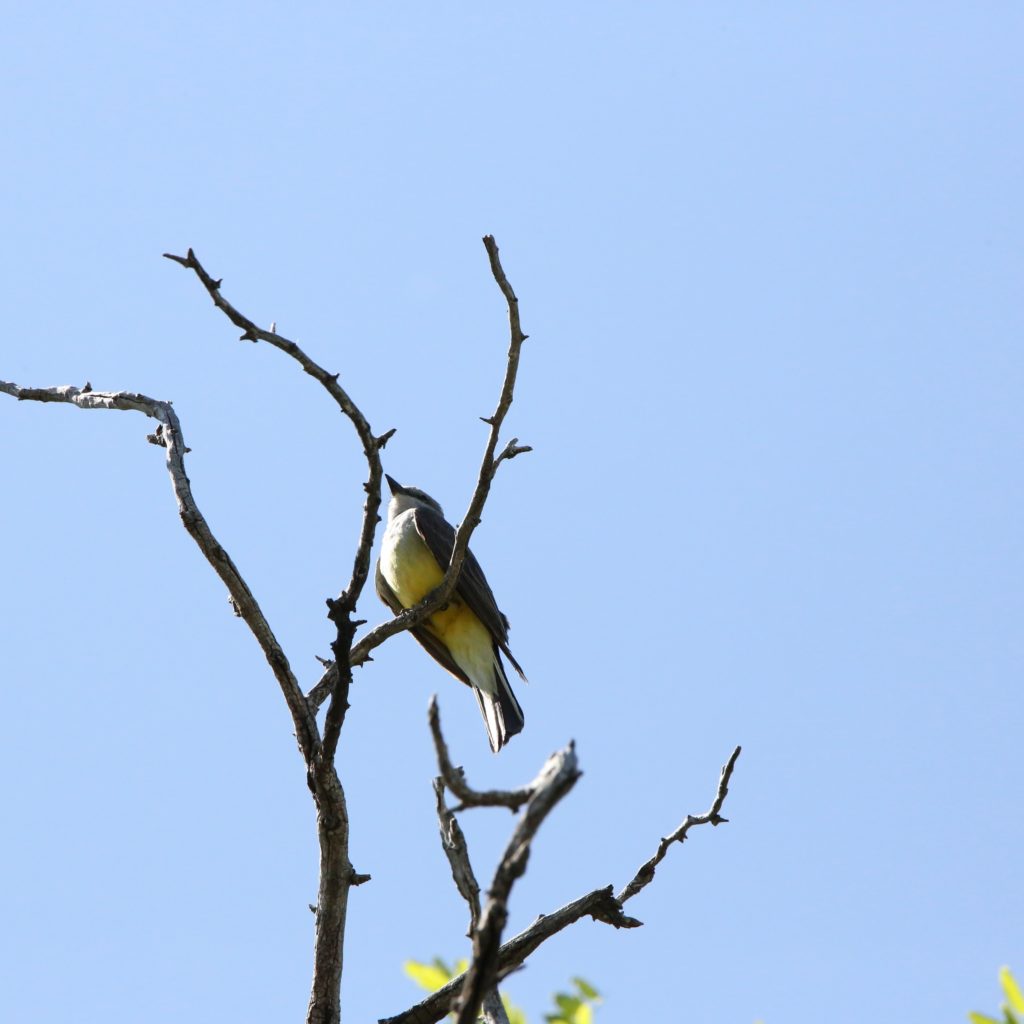
The Western Kingbird
A Western Kingbird is a fun bird to see while bird watching. Below are some tips to help you identify Western Kingbirds. We have also put together a list of fun Western Kingbird t-shirts, Western Kingbird bird patches, birdhouses, bird feeders, binoculars, stickers, and other fun bird-watching items.
About Western Kingbirds
The Western Kingbird formerly known as the Arkansas Kingbird is a familiar sight in open habitats in North America during the summertime. This is especially in the western regions of North America. The Western Kingbird is slowly expanding its breeding eastwards while its population has increased throughout the 20thcentury. Its population is now steady and most likely increased.
Description and Identification
These robin-sized birds are fairly larger flycatchers about 7.9 – 9.4 inches long with large
heads and broad shoulders. They have long wings that span between 15 – 16 inches and
carry medium-length tails. Adults of both sexes are of the same size. Both sexes have gray
and yellow plumages, but males have a few crimson feathers that are only visible during
courtship or against intruders. These birds are visually distinct from other flycatchers through
their black squared tails with white outer linings.
Western Kingbird Color Pattern
The Western Kingbird has an ashy gray head and neck while its plumage is lemon-yellow making it an eye-catching bird to look at. They have a flashy black tail with white trimmings around the edges. They have a reddish crown that they display during courtship or when defending their nests from other species
Western Kingbird Size
The bird is a fairly large bird with a short beak. Its tail spans about 3 inches while its wing is about 5 inches long.
- Length-8–9.3 in (200–240 mm)
- Weight-40-42g
- Wingspan-5 in (390 mm)
Western Kingbird Behavior
The Western Kingbird is an aggressive bird especially when it’s defending its nest against other types of birds. The male defends its territory by singing a dawn song. It incessantly sings at the first hint of daylight. During courtship, the male will give a flight display by rapidly flying up and down in a zigzag pattern. The formulation is done while giving out rapid sputtering calls.
They are mostly seen flycatching near utility poles and trees where they nest.
Western Kingbird Food
Western Kingbirds primarily consume insects. They rely on their eyesight to catch their prey
and can be observed using acrobatic movements to catch flying insects out of the air. They
also swoop down from perches to eat prey on the ground or forage for insects from the
vegetation while hovering. Their smaller bills limit their food to small prey. They have also
been observed to capture some prey and then shake and beat them in order to subdue
them. They mainly consume bees, wasps, grasshoppers, crickets, beetles, moths,
butterflies, caterpillars, flies, and spiders. When there is a limited amount of prey, they may
consume fruits of plants like elderberry, woodbine, Texas mulberry, and other shrubs.
They mainly feed on insects such as flies, bees, wasps, beetles, and grasshoppers among others. They also feed on small fruits like berries.
Western Kingbird Habitat
Western Kingbirds thrive in open areas across western North America. Their preferred
habitats include grasslands, desert shrubs, savannahs, pastures, cultivated fields, and urban
lands. Their requirement for open areas drives them to inhabit the edges of woodlands, for
better accessibility to foraging. The birds are generally found near trees like Fremont
cottonwood, Arizona sycamore, oaks, junipers, creosote bush, sagebrush, and ponderosa
pines. Their adaptability has also driven them to nest in manmade structures like utility poles
and fences in urban areas. Recent efforts to prevent forest fires have increased their
populations.
In Western America, the Kingbird can be found in farms located in the semi-open country. They also like nesting alongside roads on utility poles and trees. They love the grasslands and can be seen perching on utility lines while feeding on insects. Consequently, their population has increased with increased human activities. Therefore, they are not likely to be extinct any time soon.
Range and Migration

Western Kingbirds are tyrant flycatchers that are found abundantly in the United States.
These birds are known for their adaptability and are frequently found nesting in busy urban
cities. Their range is almost entirely limited to the western half of the United States where
they breed in the woodlands and mountain valleys around the Rocky Mountains. They are
spread in regions around the Great Plains until they depart for their winter grounds along the
Pacific Coast in Mexico and western Central America. Some stray flocks have been
observed along the Atlantic Coast in Florida as well.
Western Kingbird Life Cycle
The female Western Kingbird builds the nest on its own. It is capable of laying up to 7 eggs but on average, lays 5 eggs. It takes 12-19 days for the eggs to hatch and the young nest for another 13-19 days before they can fly. The bird has a lifespan of about 6 years.
Western Kingbird Nesting
Potential nesting sites are visited by both members of a pair, but there is insufficient data
about which one makes the final decision. These sites are selected on shrubs or the
crotches of trees like cottonwood, pecan, elm, willow, sycamore, juniper, sagebrush, and
green ash. They can also be found in urban structures like utility poles, windmills, antennae,
fenceposts, buildings, and metal girders. The nests are built by the females alone, where
they weave a bulky, open cup with grass stems, rootlets, fine twigs, bark, cotton, and other
plant fibers. The inner layers are lined with softer materials like wool, hair, feathers, strings,
or bits of cloth for insulation. Females have approximately 1 – 2 broods each breeding
season after an incubation period of 12 – 19 days, with a single clutch containing an average
of 2 – 7 eggs.
Ornithology
Bird Watching Academy & Camp Subscription Boxes
At Bird Watching Academy & Camp we help kids, youth, and adults get excited and involved in bird watching. We have several monthly subscription boxes that you can subscribe to. Our monthly subscription boxes help kids, youth, and adults learn about birds, bird watching, and bird conservation.
Bird Watching Binoculars for Identifying Western Kingbirds
The most common types of bird watching binoculars for viewing Western Kingbirds are 8×21 binoculars and 10×42 binoculars. Bird Watching Academy & Camp sells really nice 8×21 binoculars and 10×42 binoculars. You can view and purchase them here.
Western Kingbird T-shirts
If you love the Western Kingbird you should purchase a Bird Watching Academy & Camp T-shirt. To help support bird conservation we donate 10 percent to bird conservation activities.
Western Kingbird Iron On Patches
Kids, Youth, and Adults love to collect our Bird Watching Academy & Camp iron-on patches. Our bird-watching patches help you keep track of the birds you have seen and identified. You can also display the patches on our Bird Watching Academy & Camp banners.
The Western Kingbird is a great iron-on patch to start your collection with. The patches are durable and can be sewn on or ironed on to just about anything.
Western Kingbird Stickers
Stickers are a great way for you to display your love for bird watching and the Western Kingbird. We sell a monthly subscription sticker pack. The sticker packs have 12 bird stickers. These sticker packs will help your kids learn new birds every month.
Bird Feeders for Western Kingbird
There are many types of bird feeders. Here are our favorite bird feeders for your backyard. We use all of these bird feeders currently. Kids will have a great time watching birds eat at these bird feeders. Using this collection of bird feeders will provide a wide variety and many types of birds.
Best Bird Houses for Western Kingbird
There are many types of birdhouses. Building a birdhouse is always fun but can be frustrating. These 4 birdhouses have become our favorites. Getting a birdhouse for kids to watch birds grow is always fun. We spent a little extra money on these birdhouses but they have been worth the higher price and look great.


